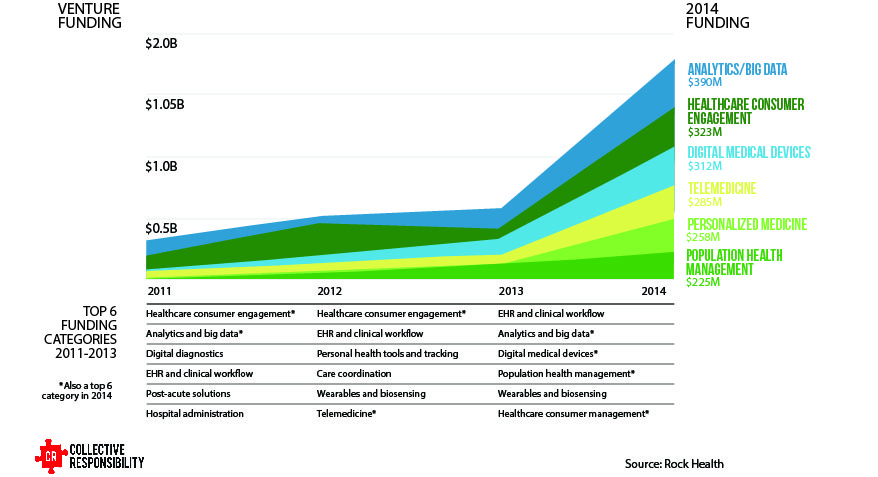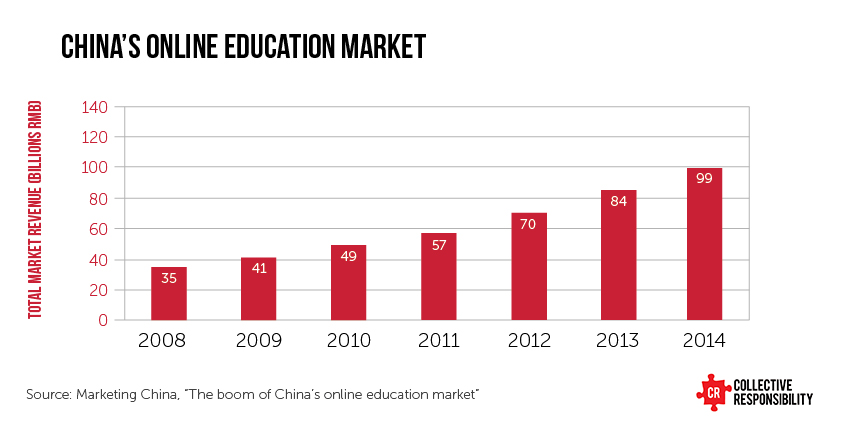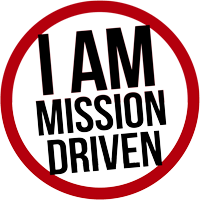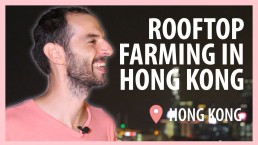Urban Farming in Hong Kong - Pol Fàbrega, Rooftop Republic
In this episode I speak with Pol Fabrega about his experience building Rooftop Republic. Interviewed on his own rooftop, we dug into the movement of urban farming, the potential for urban farming in Hong Kong, and building his business. It is an interview that is full of tactics, and lessons of resiliency, patience, and building a movement towards something better within the confines of today's economic models and consumer expectations.
About the Entrepreneurs For Good Series
Through this series, we speak with Asia based entrepreneurs whose mission it is to bring solutions to the environmental, social, and economic challenges that are faced within the region to learn more about their vision, the opportunities they see, and challenges that they have had to overcome.
It is a series that we hope will not only engage and inspire you, but catalyze you and your organizations into action. To identify a challenge that is tangible, and build a business model (profit or non) that brings a solution to the market.
About Pol
After graduating with a MA in International Relations, Pol devoted the first years of my career to the academic and non-profit sectors where he worked in Europe and Asia on a wide range of issues from education to human trafficking, gender equality, or human rights.
In 2012, life brought Pol to Hong Kong where he had the chance to connect with the local organic farming movement, where he realised the potential of urban farming to transforming the way we currently grow, consume and think about food.
At Rooftop Republic, he am mostly responsible for business development, programme management and finances.
Follow Pol and Rooftop Republic
Website: https://www.rooftoprepublic.com/
Facebook: https://www.facebook.com/pol.fabrega.9
LinkedIn: https://www.linkedin.com/in/pol-f%C3%A0brega-vilella-b1002040/
Instagram: https://instagram.com/rooftop_republic/
About Rich
Driven by the belief that change begins with a single step, Richard Brubaker has spent the last 15 years in Asia working to engage, inspire, and equip those around him to take their first step. Acting as a catalyst to driving sustainability, Brubaker works with government, corporate, academic and non-profit stakeholders to bring together knowledge, teams, and tools that develop and execute their business case for sustainability.
Follow Rich
Website: http://www.richbrubaker.com
Facebook: https://www.facebook.com/rich.brubaker
LinkedIn: https://www.linkedin.com/in/richbrubaker
Snapchat: http://snapchat.com/add/richbrubaker
Instagram: https://instagram.com/richbrubaker
Twitter: http://www.twitter.com/richbrubaker
Contact Rich
[email protected]
Full Interview Transcript
RICH: I'm here with my friend Pol from Rooftop Republic. It is at night, but we are here to talk about rooftop gardens in Hong Kong. I wish you could all see the garden that he has, but hopefully you're enjoying the background. Remember if you like this, if you find value, if you enjoy his story, please remember to like, share and comment.
Thank you very much, Pol. Appreciate your time spending with us. So, do me a favor and introduce yourself and introduce Rooftop Republic.
POL: My name is Pol Fabrega and I'm the cofounder of Rooftop Republic. Social enterprise that promotes urban farming in Hong Kong. Our main vision for Rooftop Republic is to integrate urban farming into our city lifestyle. So we set up farms on rooftops. We help to maintain those farms and we organize a lot of workshops and programs around urban farming and around food and around sustainability as well.
URBAN FARMING IN HONG KONG
RICH: What is an urban farm and what does urban farming look like in Hong Kong right now?
POL: So an urban farm is basically a farm within the city limits. It can be right in the middle of the city, like right now right now here on this building. Or it can be within the _____ (1:32) urban areas surrounding of a city. So in the surroundings of a city. The particular like case of Hong Kong is quite interesting because we live in a very densely populated city. We have an area out there called the new territories. There is a little more of a rural sort of land and there is more farmland, but here in the city is a very dense, very sort of concrete jungle kind of city. What that means is that when we set up farms within the city, generally we do it on rooftops just because that's the most widely available space in Hong Kong.
THE GOAL OF URBAN FARMING
RICH: Are we gonna feed people using rooftops? Like what's the goal of urban farming at it's central core right now?
POL: There is a university professor here in Hong Kong who has been doing a lot of research on rooftop farming. He has estimated that there is around 600 hectors of rooftop space that could be available, could be suitable for rooftop farming. That almost equals the amount of farmland that is currently farms in Hong Kong. So, only with the rooftop space we could double, you know the amount of, not necessarily double the yield because we might not get the same yield, but double the amount of space that we using for farming today.
CAN ROOFTOPS FEED HK?
RICH: Yeah, and actually that's kinda my question. Ok you have 600 hectors potentially, but it's spread out over a little 20 square meters, 50 square meters. It's actually really an efficient space, so how do you make this work?
POL: So for us, our model, like we were with a wide range of clients and they have different interests. They have different, they come to us for different you know with different approaches I guess. So we work a lot with property developers obviously to set up farms within their buildings. This can be within commercial buildings, this can be within industrial buildings, part of residential buildings and but we are also with hotels and restaurants to supply their you know to supply their kitchens in this case. But we also work with schools more for educational purposes. We work with corporates more like employee engagement and sustainability and corporate social responsibility. We work with community organizations more for the community and social aspect of having an urban farm and we work with individuals. This is my rooftop and I have a few planters where I'm able to grow my own vegetables.
So you know different kinds of people, different kinds of clients from our perspective have different kinds of interests and we'll use those spaces and those yields for different, for different reasons I guess.
RICH: We're in Hong Kong. It's pretty tropical year round. What are the types of plants or vegetables or like what can you do on a rooftop like this. What works, what doesn't?
POL: So in Hong Kong, we mostly divide the seasons in to two main seasons. The cold season or the warm season. Now we're entering the cold season. So between September/October all the way until April/May, it's the time of the year where we can grow wider range of things because the temperatures are little bit more mild and bit more or like it doesn't rain so much, it's not so hot so humid. We grow all kinds of things. We grow everything from tomatoes, carrots, beet roots, spinach, broccoli, cauliflower, speed roots, all kinds of things.
Then in the summer in the warm season, we grow maybe a little bit less variety, but we can still grow a lot of things like beans, eggplant, squash cucumbers, peppers, bazo, chili, sweet potatoes, water spinach. So this basically it's always a season for something. What we try to educate the people is that you need to know what to grow when. To be able to be a successful farmer.
RICH: How did you get into this?
POL: So I'm originally from Barcelona. Before coming to Hong Kong, I absolutely knew nothing about farming, about food, about growing. Certainly I would not have imagined to be coming to Hong Kong to become an urban farmer. But I came to Hong Kong 5 years ago and I had the chance to connect with a local organic farmers here in Hong Kong. There's actually a lot of farmers in Hong Kong There's around 450 organic farms in the new territories, different sizes. Some are a bit smaller, some are a bit larger, but I started to kind of learn from them. Started to become more interested in growing, in food, and our food system started seeing all the problems associated with our core and food system. Started thinking about together with my cofounders, started thinking about how can we bring this movement, which is kind of developing in the new territories to the heart of the city and make it accessible to city dwellers.
GOING ALL IN
RICH: How did you know this was more than just a hobby that you come up on a Sundays and you pick you beans? How did you know you could make money? How did you know you could build organizations? Like what did it take before you made the jump on your own?
POL: I had no idea basically. Sort of like had no business plan, had no you know this is something quite new, it's quite an infant sort of industry especially in Hong Kong. It might be much more developed in other countries, but here we didn't have any reference really. Is this gonna fly? Is this gonna work? Are people going to like it? Are people going to be willing to pay for it? Who are going to be our clients? We had an idea obviously, but we had no idea whether or not the market would respond to our assumptions. Luckily enough we were able to quickly realize that there was, there was the demand for our services. From there obviously that was a lot of iterations, developing your services, improving them, getting feedback from your clients, learning as you go along and sort of fine tuning your business model and your business as a whole.
EARLY LESSONS
RICH: What were the early lessons that you think were just super critical to either learn from failure or like wow, we got that right. Like we had that.
POL: The technical side of farming was something we were not really familiar with. So we needed to overcome that by surrounding ourselves with some you know with some expert organic farmers that were working with us and that still work with us. So I would say would one of the main challenges.
The other challenge was how are we going to market ourselves and how we market ourselves to different kinds of clients Because like I said different clients come to us with different, very different interests. Everything from a school, who runs a school programs to a corporate who wants employee engagement and sustainability sort of program initiative. So these are very different clients, different users at the end of the day of our farms.
SEGMENTATION AND FOCUS
RICH: Is it a good thing to go after so many different types of clients or should you just focus...like each one's different so how so how do you make sure you maintain quality for all of them?
POL: So we had to develop, we had to develop tailor made solutions and this took a while obviously. You know we didn't have curriculums to give to schools for example at the beginning. So we were you know putting together workshops, curriculums and learning from other trainings that we had undertaken ourselves, consulting with farmers and so on to actually deliver something that would be suitable for a school for example. We need to try and build customize solutions that could be applicable to different client segments. We didn't focus like our range of clients was a little more limited at the beginning and then we kind of expanded gradually as we went along.
PERFECTING THE GRIND
RICH: So the core. What are some things you have to do every day to make it work to like, to succeed to have a valuable proposition that's stable? What are two or three things that just have to work every day?
POL: One of our key services is so we set up farms that's one main service. We design and install these farms, but also we do the management of these farms. It this is actually very critical especially from a business perspective. So when we set up a farm we have a client and we design it an set it up, that is one of the bit of revenue that we get. But what happens afterwards? How can we ensure that project is successful, sustainable and it's achieving the objectives that is has and it's making you know the client happy with it.
That's where our second service comes in where we provide a farm management service where we need to, not only is it a technical sort of support we provide where we send organic farmers to all of these farms to do some maintenance, but it is also managing the client's stakeholders. All of the users of these farms and how do we successfully and effectively engage them in the day to day running of the farm. How do we build an understanding? How do we build their passion for it? How we keep that momentum goin?. That is the most challenging one and that is where we are putting in a lot of energy.
PERSONAL RISK
RICH: You live in one of the most expensive cities in the world. How do you make this work for yourself personally?
POL: Obviously as an entrepreneur when you start on this journey you take a lot of risks and there are a lot of uncertainties. Together with my cofounders we invested some of our savings into this without necessarily knowing whether it was going to fly. You need to kind of be able to take that jump and have confidence that you have something that might be valuable and might work out and keep working on it.
It has worked out for us. Today we have 3 cofounders, we have 2 staff and we have a lot of people that we work with on a more part-time basis more on a project basis. So if you're able to pay five salaries, fulltime salaries. We are able to pay several part-time salaries by building our pipeline, expanding the client base, doing a lot of business development, putting the word out there, a lot of marketing and also media, media attention, media coverage that definitely helps to sort of reach different audiences. It has been working out so far. We've been around for 2 years and half and we're still kicking so.
RICH: Kicking is the first step to thriving right? So that's ok. You're still alive.
SCALE
RICH: You've got over 30 rooftops now?
POL: Over 30, yes.
RICH: Over 30, where do you go from here? Like how many can you achieve here? How many do you want? Then is scale something you talk about, something you dream about or is 30 a good number for you?
POL: No, I think 30 is just a start. We feel like potentially in Hong Kong we specially see a lot of potential more working more directly with property developers and architecture firms to actually integrate urban farms in spite of their designs. So entering like the history, like the life of a building at the design stage where we can actually fully integrate it into the whole building. There is a whole trend towards green building in Hong Kong and also abroad. There is a whole trend towards well being, promoting well being and building environments. So this fits very well with general trends we seen in the architecture and the property sector.
So we see a huge window of opportunity there to develop our business in that direction. Both in Hong Kong and abroad. We already have a couple of projects in China. One in Hunan, in Wong Dong and we get inquiries from other regions, Shanghai, from ____(12:49) from other parts of China and also from other parts of Asia. Mostly like bigger cities and we see that there's a lot of potential to develop, expand our operation here in Hong Kong, but also tap into some of these other nearby markets that have similar markets for that.
RICH: Very Good.
MEASURING SUCCESS
RICH: How do you measure success for your organization. How do you measure the impact that you are trying to have?
POL: We have a lot of quantitative indicators that we are tracking. Everything from how many arms have we set up, how many square feet of underused urban space are we transforming into urban farms. Yields that we are getting form some of our rooftops. Number of workshops and programs that we are running. Number of participants that are attending these workshops. Number of people that we are training to become urban farmers because we are also doing some trainings for different groups with sort of underprivileged backgrounds to provide them with job opportunities and employment opportunities.
So how many have we trained, how many of them actually employed at the end of the program, etc, etc. So there are a lot of more quantitative indicators that we are trying to track to measure how much impact we having. But then there's also a whole range of quantative data that we would like to also dig into and collect although it is much more complex arena, but trying to see how people are reacting to this project. Ok, you been part of part of this project as been participating this urban farm for a year. How do you feel different about food? How do you...have you changed your behavior in shopping?
RICH: So you're trying to measure the immeasurable.
POL: Yes. Like the quality, like mindset change, behavior change.
RICH: That's the tough stuff to measure. People talk a lot about that.
POL: Yes. Do we try and do survey's before and after the program. How have you changed your perspective of food? On farming, etc, etc.? Trying to capture that change in their behavior.
TIPS TO VIEWERS
RICH: You have an aspiring entrepreneur watching this. What are three pieces of advice you give to someone when they're starting this process? Like what are the three keys to success? Like what are the three things they should avoid? Or what are the three challenges they should persevere through because it's fucking hard! Right?
POL: It's a very lonely journey. It's a very hard, you know it involves a lot of hard work. I don't want to paint like a pink picture of what being an entrepreneur is because it has a lot of nuances being an entrepreneur. It's incredibly gratifying and it's incredibly rewarding on many levels because you're building up your own thing and you're creating your own. You're sort of developing your own visions for something. So that's really exciting and that's what drives me and that's what keeps me going and what makes me sort of overcome all the obstacles.
But you also need to be aware that there will be hard times. There will be a lot of uncertainties. There will be a lot of risks you will have to take and sort of adventure into the unknown and be able to navigate through that. Find what works for you. Find that balance that works for you in managing this feelings, this emotions and this...
RICH: When you're navigating that, what's your..what is your flashlight? What is your compass? What are the things that you....what are the tools you have when you're really trying to navigate through that when you're uncertain? What are the things that you have to have to get through that?
POL: One of the things that we really have been working on is since you're a startup, you only have so many resources. You only have so many people. You only have so many skills sets. You have so many gaps. You have to change hats and double, you know, double up to do everything a business or organization needs to achieve. So you need to surround yourself. You need to build your network. You need to build a pool of people that are there to support you when you need them. So you need to really establish those relationships with advisors. With people who are at good with finance or people who are good at market. Or people who are good at different aspects of your work that you might not be necessarily very good at and sort of trying to find how you can think creatively about...ok, I don't have money to pay someone fulltime to be my marketing manager, but I need marketing. So how do I creatively find a solution for it.
One of the things we tried to do is surround ourselves with good people around us, good advisors that can fill in the gaps when we need that can support us along the way.
RICH: Thank you very much for your time.
POL: Thanks Richard, it's a pleasure.
For more interviews from the "Entrepreneurs for Good" series, check out the playlist here.
Stay tuned for more clips and full interviews in the coming weeks.
Developing and Scaling Sustainable Tech in China
With the size of economic, social and environmental challenges growing at a scale and scope that can shatter limits set by global governments, Mother Nature and society, sustainable tech will become the gauge by which we analyze resource levels, measure system performance, identify efficiencies, curb consumption and influence stakeholders to make better decisions.
We are already seeing the results in a number of areas, and the gains made by streamlining our lifestyles and systems to increase efficiency is a win-win for both individuals and the environment around us.
Food & Agriculture
Over the past 30 years, China has experienced rapid levels of urbanization and its citizens have become richer. But the trade-off has been depletion in arable land while structural inefficiencies in the food value chain have made it difficult to provide safe, accessible and affordable food to the market.
With available arable land diminishing and what little there is of it increasingly over utilized, one solution that can boost production in order to meet demand is aquaculture and hydroponic systems . Alesca Life Technology is an example of a firm taking the next step forward, through the adaptive re-use of shipping containers where food can be grown within the proximity of urban centers. Another example is Oceanethix, whose urban aquaculture process can turn any warehouse or retail center into a highly productive, environmentally clean, and transparent fish farm.
As China lurches from one food safety scandal to another, it is clear that consumer confidence has deteriorated and changes are being demanded to improve and introduce sustainable practice. Using smartphone applications and online solutions, consumers can now easily scan and receive information regarding products’ life cycles. Shenzhen Vanch and IBM group are among those who have invested in traceability systems in China, a lucrative business opportunity that also gives consumers peace of mind.
There is also tech progress being made at other steps along the supply chain . For example, the introduction of drones that leverage advanced sensors, low-cost aerial camera platforms and autopilot capabilities can give farmers the ability to view their crops from above, detect and assess irrigation issues, pest infestations, plant health and provide soil analysis. Tech products provided by companies such as DJI innovations and Ehang are now being used by hundreds of farms across China.

Healthcare
While it has made great strides in improving the quality of life for its 1.5 billion residents, China’s healthcare system has seen increased pressure to meet the size, scale and speed required for the country’s urbanized population. This pressure increases by the day as China’s elderly population grows, and its residents transition into an urban lifestyle that includes higher levels of processed foods and lower activity levels.
To overcome the challenges faced, the government predictably made investments in hospitals, equipment purchases, and in training medical professionals. However there are a number of areas where technology has already proven itself in improving the accessibility, affordability, and quality of healthcare in China . In response to the long-standing problem of vast queues and growing inefficiencies in Chinese hospitals, solutions to cut the time spent at the hospital have grown popular. Guahao, a leading mobile app in this space, connects patients with doctors, allowing users to search for physicians in their geographic location and book appointments.
At the other end of the spectrum is personalized medicine. In response to the lack of trust between patients and doctors, medical tech companies offer a more personalized approach to healthcare where consumers can “shop for doctors”, review their qualifications, and contact them instantly . Tech has also become an important element in preventative medicine and one of the biggest trends these days is wearable medical devices. Once luxury items for sports enthusiasts, for many people wearables are now becoming a part of daily life and may soon present an opportunity to improve quality care at the personal level. Many see this as a crucial area for healthcare, with users able to measure an increasingly wide range of metrics including heart rate, sleep patterns, blood pressure, blood oxygen, and blood sugar. There are already a number of products on the market from Xiaomi, Huawei, Fitbit, and Apple that are growing in popularity and use.

Education
China has a national goal of economic prosperity for 2025, but the country’s rigid education system makes it difficult for students to develop skills required by both domestic and global employers. They are constantly pressured to achieve high standards but have minimal resources to adapt to the rigorous system, paving the way for an unsustainable future in education. There is limited access to quality content and structured English language classes in rural areas, while the gao kao – a high-stakes exam for high school students hoping to get into college – is seen by many as a measure of who is best at rote learning. But there is help available in the form of online tutoring and test prep . These range from simple mobile apps such as Baidu’s Homework Helper and Kuailexue that allow students to crowd-source homework help, to online websites such as Genshuixue and Superclass, which allow students to select courses and teachers to learn interactively.
Then there are online language teachers: although English is taught in school, there are few opportunities for students to practice speaking the language. To fill that gap, startups like italki and mobile apps like CCtalk from Hujiang, are helping students connect with native speakers and teachers. This creates a personalized learning environment for students and gives them real interaction with the language.
Tech rules
Thanks to the development of technological solutions, and through the analytics that will come through the Internet of Things and meta-data analysis, smart products and services are able to tell us more and more about our daily lives. They help us identify areas for cost reductions, create opportunity and improve the uptake of technologies that help drive increased sustainability across a number of systems that will be at the core of managing the development of megacities.
To date, the firms best positioned to bring the solutions needed have been data driven firms like IBM, Alibaba, Apple, and others, who have spent billions of dollars over the last decade building the infrastructure to capture and analyze the data necessary to act on. But for entrepreneurs, this is also proving to be a huge opportunity ; this is particularly true of those looking for answers to tangible problems, and where development of local solutions can be supported. This is already being seen as particularly prevalent in the expanding cities of China and the rest of the developing world where urban populations are growing at the fastest rates. For tech-savvy entrepreneurs, there are myriad opportunities for well-executed planning to develop these cities into modern, sustainable urban centers .
Food and Sustainability in China
As part of my recent US trip, I was given the opportunity to fly to Indianapolis to give two presentations to DOW Agriculture leadership and sustainability teams on the sustainability and the future of food in China. As one of the largest firms in the food & agricultural sector, and one whose products extend throughout the food & agricultural value chain, I covered a wide range of important issues that are not only being faced by China, but by the world going forward to 2050, and the resulting conversations were nothing short of fantastic.
Given these are THE critical issues being faced, and will only grow in size over the next 25 years, it is important to create open dialogues with those who are both exposed to the challenges and seek to develop the solutions that solve them.
Key questions covered a range of issues of strategic importance, with the following being the most discussed:
- How does China define sustainability, what are the key issues of concern, and what/who are the catalysts for change?
- What are the megatrends that are driving consumer demand in China, and what will be the resulting "foodprint" of China’s plans to urbanize another 250 million people?
- What are the challenges of China’s farmers, processors, and brands to deliver safe and affordable foods at the quantities needed, and what are the short term stop gaps that will be needed to overcome those challenges?
- What are the key concerns of consumers, what are the perceived/real risks that they face, and what are the actions they take as a result?
- Who are the key stakeholders, and how are brands effectively engaging with stakeholders to better understand the needs of the market and develop solutions specific for China?
As with many groups that I meet with, a lot of time was spent really helping the people I was meeting with understand not only the urgency of the situation, but also how the systems themselves are wired differently. That, while the US and EU are largely more resilient to the range of shocks that are on their way, in the world's developing nations a confluence of rising demand and increasingly unstable supplies should be the critical focal point. Not just in the fact that it could potentially lead to disaster, but that it is itself the opportunity that they are looking for.
Just as it will be for the vertical farmers I visited.



